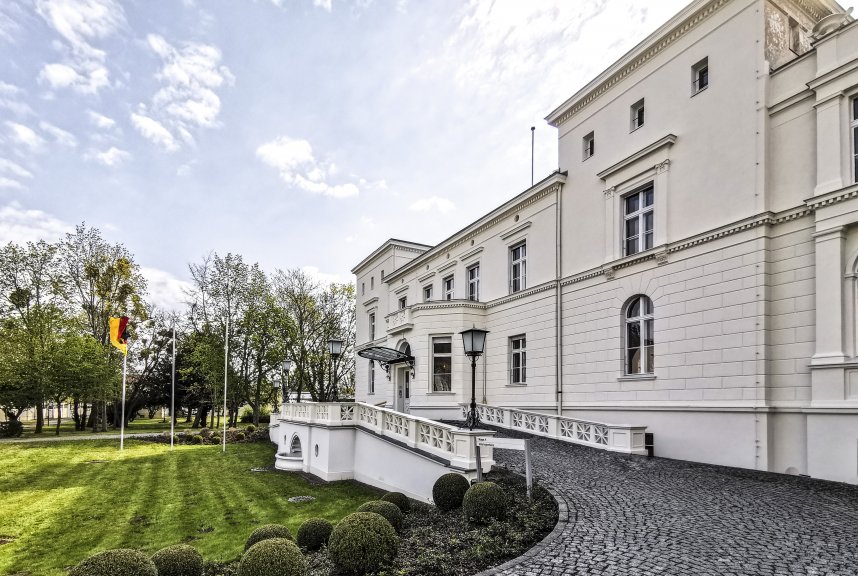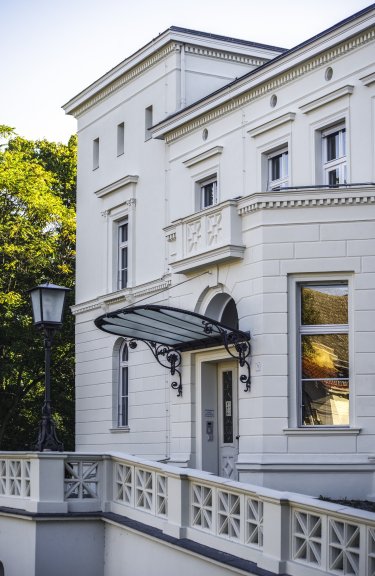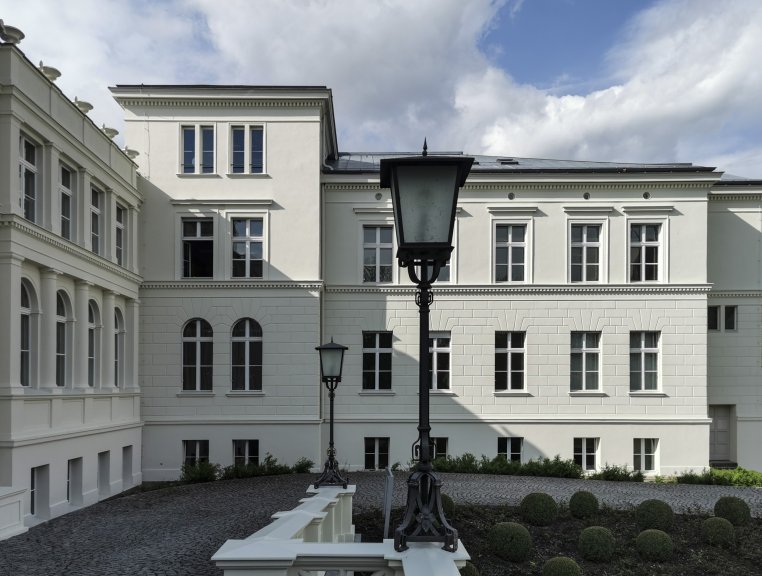With history: Villa Ingenheim
Reconstruction of the facade was not required, but only a technically meaningful rework with a moderate intervention in the existing substance. With materials of a mineral basis for the rehabilitation of the rusticated facade as a construction surface which is open to diffusion, taking account of the preservation of historic monuments.
Materiały Baumit
Dodatkowa informacja
In 1825, the Berlin Senior Medical Councillor Friedrich August Walter began the erection of an Italian-style villa in the area of a former brickyard and limekiln. After several turns of users, the Ingenheim family acquired it in 1849 and expanded this facility. In 1894, the imperial House of Hohenzollern acquired the property. From 1906 to 1907, extensive additions and extensions were built such as the of royal stables and a coach house. in 1942, the German Empire took over the property and accommodated people who had become homeless by air raids, among others. Shortly before the end of World War II in April 1945, a unit of the Wehrmacht and Volkssturm was stationed there for defending the city. Within the scope of the expropriation processes of a lot of estates of the House of Hohenzollern, the property was nationalised in 1946. From 1953 to 1958, the Soviet Interior Ministry, the barracked People's Police and the National People's Army (NVA) took turns as users. The Military History Institute of the GDR (MGI, service of the NVA), was accommodated there together with the Military Archives of the GDR until the reunion in 1990. After the takeover by the Bundeswehr the property accommodated the Military Historical Research Office (MGFA), first as a branch office in 1993 (headquarters in Freiburg i.Br.) and as a single garrison from 1994. In agreement with the Office of Historical Monuments, it was required that materials on a mineral basis should be found for a rehabilitation of the bossed rusticated façade. To this effect, Baumit multiContact MC 55 W was used; in particular due to its adhesion reserves to old painted façades. At the same time the stucco elements were reworked with high-grade lime plaster Baumit multiFine RK 70 N. All of the eastern and northern façades of the villa were reworked with respect to the plaster after the removal of the coloured coatings. The requirement was the production of a construction surface, which is open to diffusion as far as possible, taking account of the demands for the preservation of historic monuments. A new construction of the façade was not required but only a technically useful rework of the surfaces with a moderate intervention in the existing substance. It was in the monument authority’s interest to leave the traces of time visible in the form of minor cracks in window flaps and reveals, chip-offs in the cornice and rusticated face areas as well as treatment traces from previous restoration actions. Not all should be "repaired". Extensive restoration work was performed on the dentil cornices since the damage was too severe here and they represent a significant decorative element of the façade. Miscellaneous cornice areas and window flaps were newly manufacturered since the loss of substance was too large here. A larger part of the work concerned the on smooth plaster surfaces and the rusticated face areas, which were completely reworked with suitable materials within the meaning of a surface crack repair according to WTA, rule 2-4 section. 6.3. Two different materials were used for the finishing plaster. Due to the considerable crack load the mineral Baumit multiContact MC 55 W was used for the large coherent surfaces and the rusticated faces. Its increased E-module of elasticity provided a better crack bridging without any insertion of reinforcements. The finer Baumit multiFine RK 70 N, the naturally white lime fine bond rendering was used for the bandages, bands, reveals and in the plinth area. Since the bridging of cracks was less important after an agreement with the UDB Potsdam, a preservation of the fine details and structures was required. Since a new construction of the façade was not aimed at. A technically useful rework of the surfaces with a moderate intervention in the existing substance was required. The Office of Historical Monuments wished to leave the traces of time visible in the form of minor cracks in window flaps and reveals, chip-offs in the cornices and rusticated face areas as well as treatment traces from previous restoration actions. Mineral-based materials for the rehabilitation of the rusticated façade were used. All of the eastern and northern façades of the villa were reworked with respect to the plaster after the removal of the coloured coatings. A construction surface which is open to diffusion as far as possible, taking account of the requirements for the preservation of monuments.








